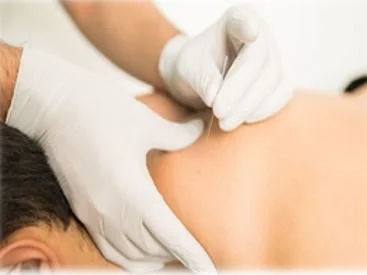DRY NEEDLING
What is Dry Needling?
Dry Needling is an invasive procedural intervention used by therapists to treat pain and functional impairments. The technique involves the insertion of a solid filament needle into the skin and underlying muscle to disrupt pain sensory pathways and relax contracted fibres (trigger points).
What is a Trigger Point?
A trigger point is the formation of a taught band within a muscle and can usually be palpable as a nodule within a muscle, which many may refer to as a ‘knot’ in the muscle.
Causes of a Trigger point
Trauma
Maintained positions/ poor posture.
A change in regular activity or increase in muscle loading.
Sustained repetitive activities i.e., working at a computer all day.
Dry Needling vs. Acupuncture
Although they appear the same in practice, the theories of how they work vary. Dry needling focuses on pain relief and directly targeting the release of trigger points, whereas Acupuncture aims to treat medical conditions by unblocking the flow of energy (Qi).
How does dry needling work?
Using dry needling is thought to stimulate muscle regeneration as it causes micro damage to the trigger point. It also stimulates an increase in blood flow to the muscle promoting oxygenation to the area and decreasing pain perception within the muscle.
When is dry needling avoided?
If you have a needle phobia
When a person is unable to give consent- due to age, communication difficulties or cognitive abilities.
If the trigger point is over an area where there is lymphoedema (due to risk of infection).
Does it hurt?
You may feel slight stinging discomfort when the needle directly stimulates a trigger point- you may experience a brief twitch or spasm of the muscle.
Will I be sore afterwards?
You may feel some aching into the muscle after treatment lasting up to 48 hours, due to increased bloody supply to the muscle stimulating repair. This may feel like you’ve just over worked the muscle in the gym.
Benefits of using dry needling:
Increased range of movement in the surrounding joints.
Reduction of muscular and neurological pain.
Increased blood flow to the area.

